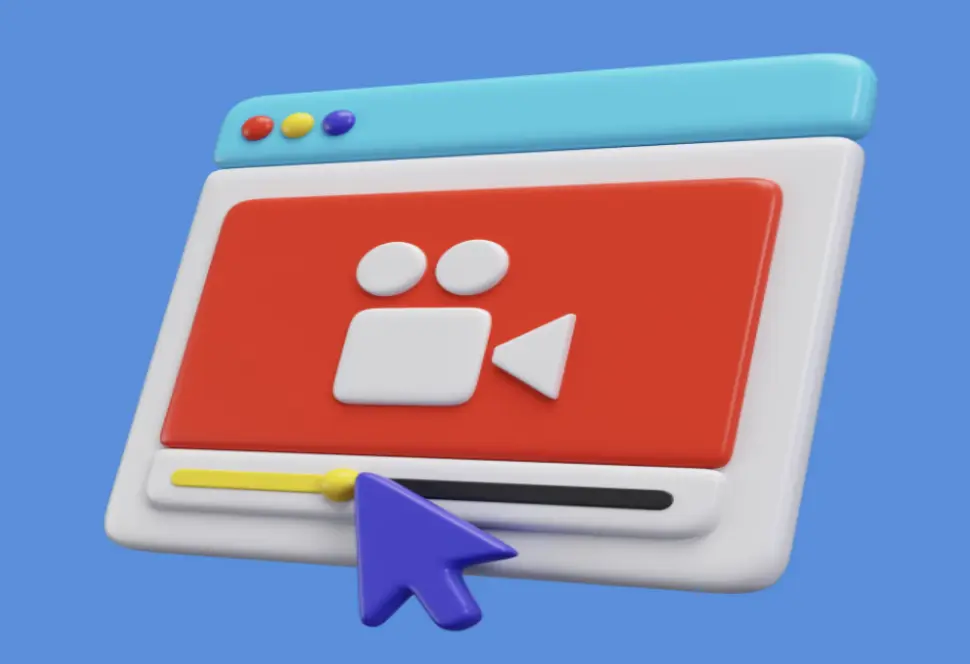In today’s digital age, the internet has become a primary resource for information. With the rise of platforms like YouTube, Vimeo, and even social media channels, videos have become an increasingly popular medium for sharing knowledge. As a researcher, you might find yourself diving into various video sources to gather insights for your work. But how can you determine which videos are credible and reliable? Evaluating the credibility of online video content is crucial, especially when using it for academic or research purposes.
This article will guide you on how to assess the quality and trustworthiness of video content online. Whether you are using videos to gather data for a research paper or simply to enrich your knowledge base, these tips will ensure you make informed decisions.

1. Check the Source of the Video
One of the first things you should consider when evaluating the credibility of a video is its source. Who is posting the video? Is it an individual, a company, or a recognized institution? Videos published by reputable organizations, universities, or experts in the field are generally more trustworthy than those posted by unknown or anonymous creators.
For instance, if you’re watching a video from a university’s official YouTube channel, it’s likely to be a credible source. On the other hand, videos uploaded by independent creators or influencers may lack the rigorous oversight of academic or professional institutions, even though some independent creators can still produce valuable content.
You should also check the credentials of the individual or organization behind the video. Do they have expertise in the field they are discussing? Have they conducted any research or published relevant work on the topic? Establishing the creator’s qualifications is a key part of determining the video’s credibility. And remember, if you’re ever unsure about your research or need help writing academic papers, you can always pay for a research paper through https://papersowl.com/pay-for-research-paper to get professional assistance.
2. Look for Citations and References
Reliable academic or research-based videos often include citations or references to studies, articles, or other trustworthy sources. A well-researched video will provide links, quotes, or a bibliography that backs up its claims. If a video lacks citations or doesn’t reference any sources, it may be a sign that the information presented isn’t fully grounded in established research or facts.
Videos that offer in-depth analysis and provide links to academic papers or reputable websites can add substantial value to your research. You can even follow those citations to further investigate the information presented in the video.
3. Assess the Quality of Production
While it might seem superficial, the quality of the production can also provide insights into the video’s credibility. High-quality videos with clear audio, professional editing, and visually engaging content often suggest that a creator has invested significant effort into producing valuable content. However, while professional quality is a good sign, it doesn’t automatically guarantee credibility. Many well-produced videos can still be misleading or inaccurate.
Look for signs of professionalism that go beyond aesthetics. Are the visuals used to support the claims clear and accurate? Does the video demonstrate expertise in the subject, or does it appear rushed and poorly thought out? If the production feels overly flashy or designed to attract views rather than inform, you should approach it with skepticism.
4. Verify the Information
Fact-checking the claims presented in a video is one of the most important steps in evaluating its credibility. It’s easy for anyone to upload content on the internet, and not all of it is factual. Check whether the information in the video matches other trusted sources. If the video discusses statistics, for example, search for those statistics in academic articles, government reports, or other well-established publications.
Many platforms, including YouTube, allow users to leave comments, and this can be a great way to find additional perspectives. If other viewers have pointed out inaccuracies or questionable claims, it’s worth investigating further. However, take comments with a grain of salt—sometimes, they can be misleading or come from unverified sources as well.

5. Check the Date of the Video
Another crucial aspect to consider is the date when the video was uploaded. Information, especially in fields like technology, medicine, and science, can become outdated quickly. A video from five years ago might not include the most recent developments or research in the field. If the video covers a topic where new information or updates are frequently released, make sure to verify that the content is current.
If you’re using the video to inform your research, always prioritize the most recent and relevant information. You might also want to check if there are more recent videos on the same topic, especially if the video you are watching seems a bit dated.
6. Evaluate the Tone and Intent of the Video
Take a moment to consider the tone and intent behind the video. Is it trying to inform you objectively, or is it trying to sell you something or promote a particular agenda? Some videos are designed to entertain or engage with a specific point of view, which can influence the information presented. Be wary of videos that seem overly emotional or biased, as they may lack the neutrality necessary for sound academic research.
For example, a video promoting a particular product might exaggerate its benefits or omit key information that could paint it in a less favorable light. Similarly, videos discussing controversial topics may use sensational language to sway opinions rather than present objective facts.
7. Look for Peer Review or Expert Opinions
When researching a topic, it’s important to consider how the video fits into the broader academic or professional conversation. Some videos may feature interviews with experts or have been reviewed by peers in the field, making them more credible. If the video cites other well-known experts or publications, it suggests a higher level of research and care.
Another good indicator of credibility is whether the video invites critical feedback or acknowledges opposing views. In research, it’s important to explore multiple perspectives, and a video that only presents one side of an argument may not be the best source for balanced information.
8. Be Aware of Deep Fakes and Manipulated Content
With advancements in AI, it’s now easier than ever to manipulate video content. Deep fakes, for instance, can alter a video’s content, making someone appear to say or do something they never did. Although detecting deep fakes requires a high level of scrutiny, paying attention to inconsistencies in the video—such as unnatural movements, awkward speech patterns, or discrepancies in lighting—can help you spot manipulated content.
If the video seems too good to be true, or if you notice discrepancies that suggest it’s not authentic, it’s best to find other reliable sources to verify the claims.
Conclusion
In the world of online research, videos can be an incredible resource. They provide real-time demonstrations, interviews with experts, and complex visual explanations that text alone cannot offer. However, with the abundance of information available, it’s crucial to evaluate the credibility of these videos before incorporating them into your research.
By checking the source, verifying the information, examining the production quality, and considering the video’s intent, you can make informed decisions about the content you consume. Also, don’t hesitate to double-check the facts, especially when using videos for academic purposes. After all, using reliable and credible resources ensures that your research is solid, trustworthy, and accurate. If you’re unsure about how to use video content or need further assistance with your academic work, remember that professional research paper services, can offer the guidance you need to excel in your studies.
Ultimately, being a critical consumer of online video content will allow you to enhance your research and produce high-quality work that stands up to scrutiny.
